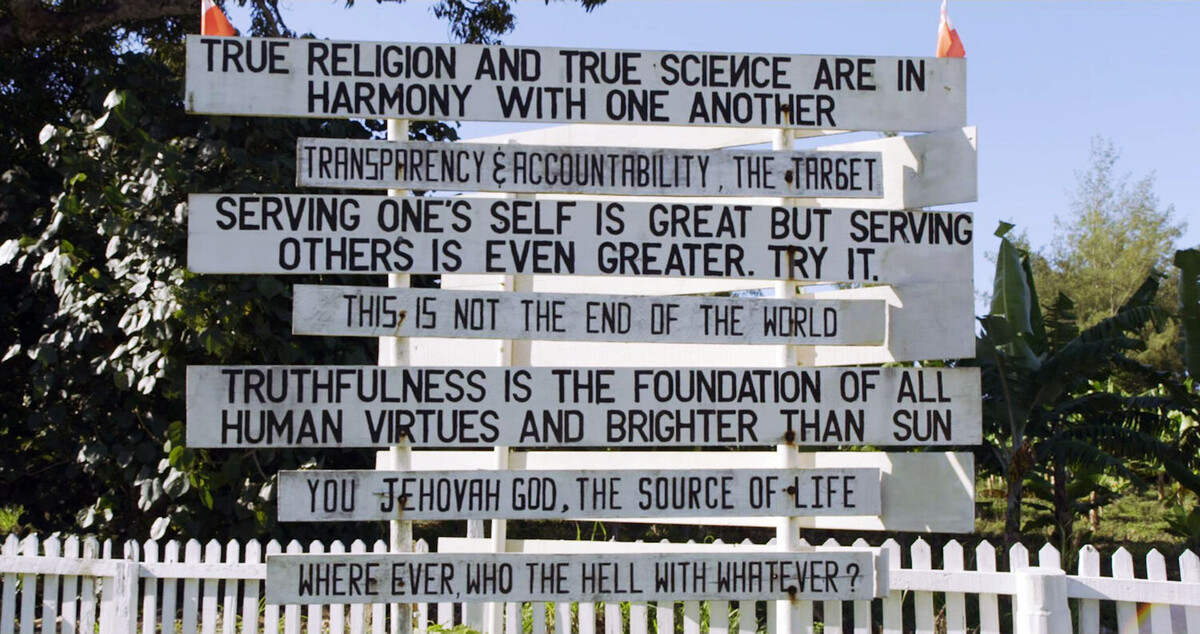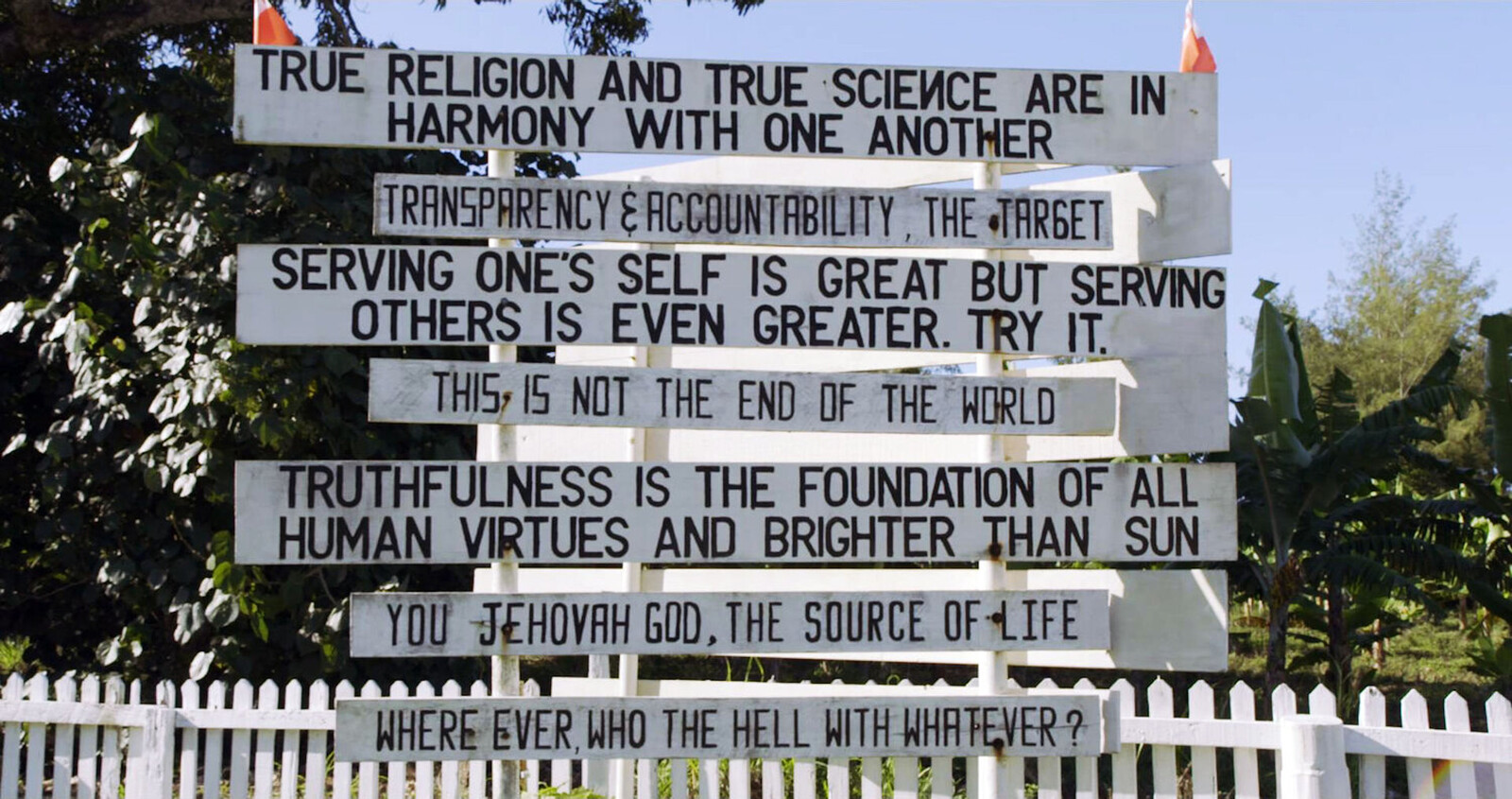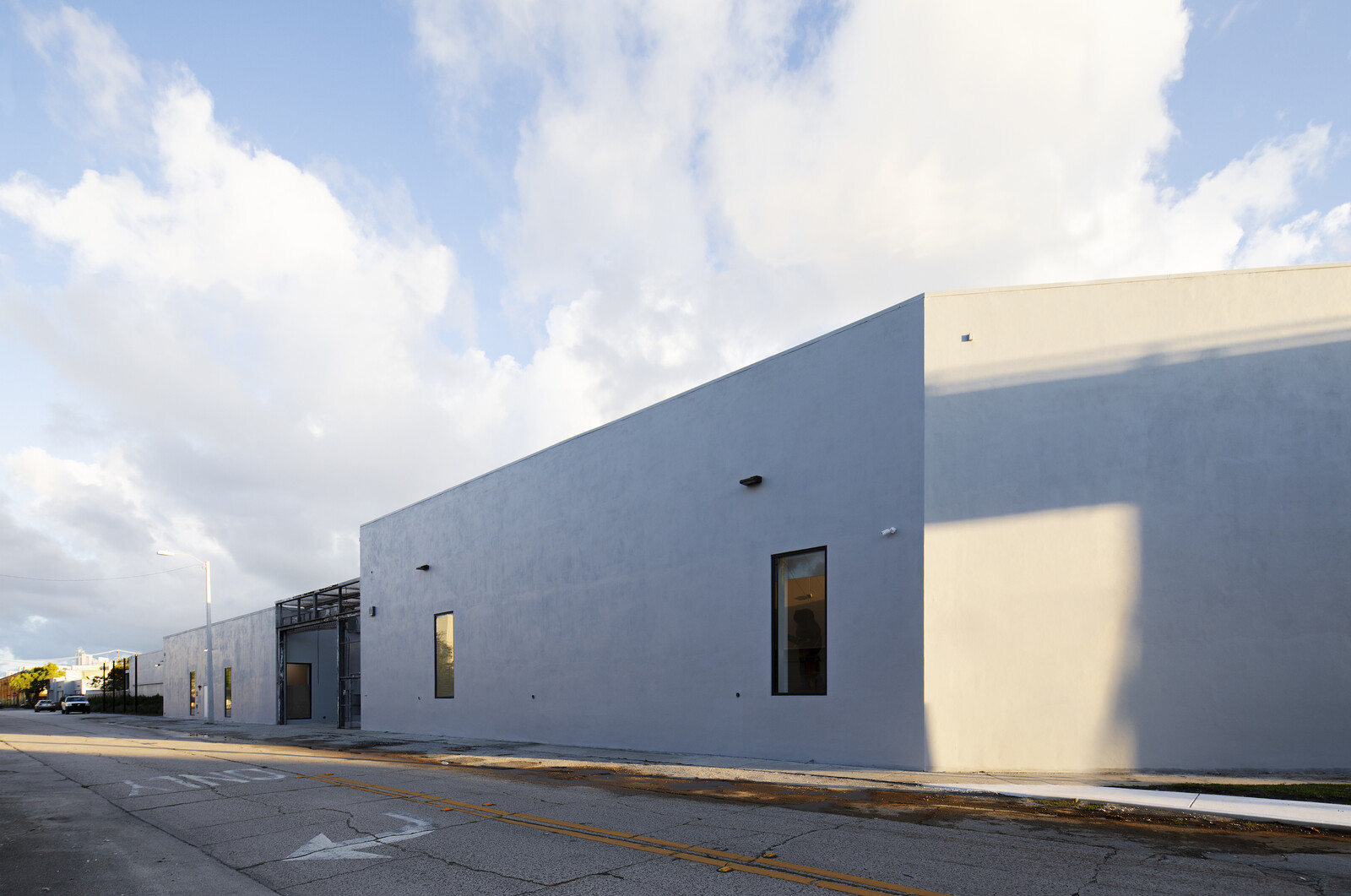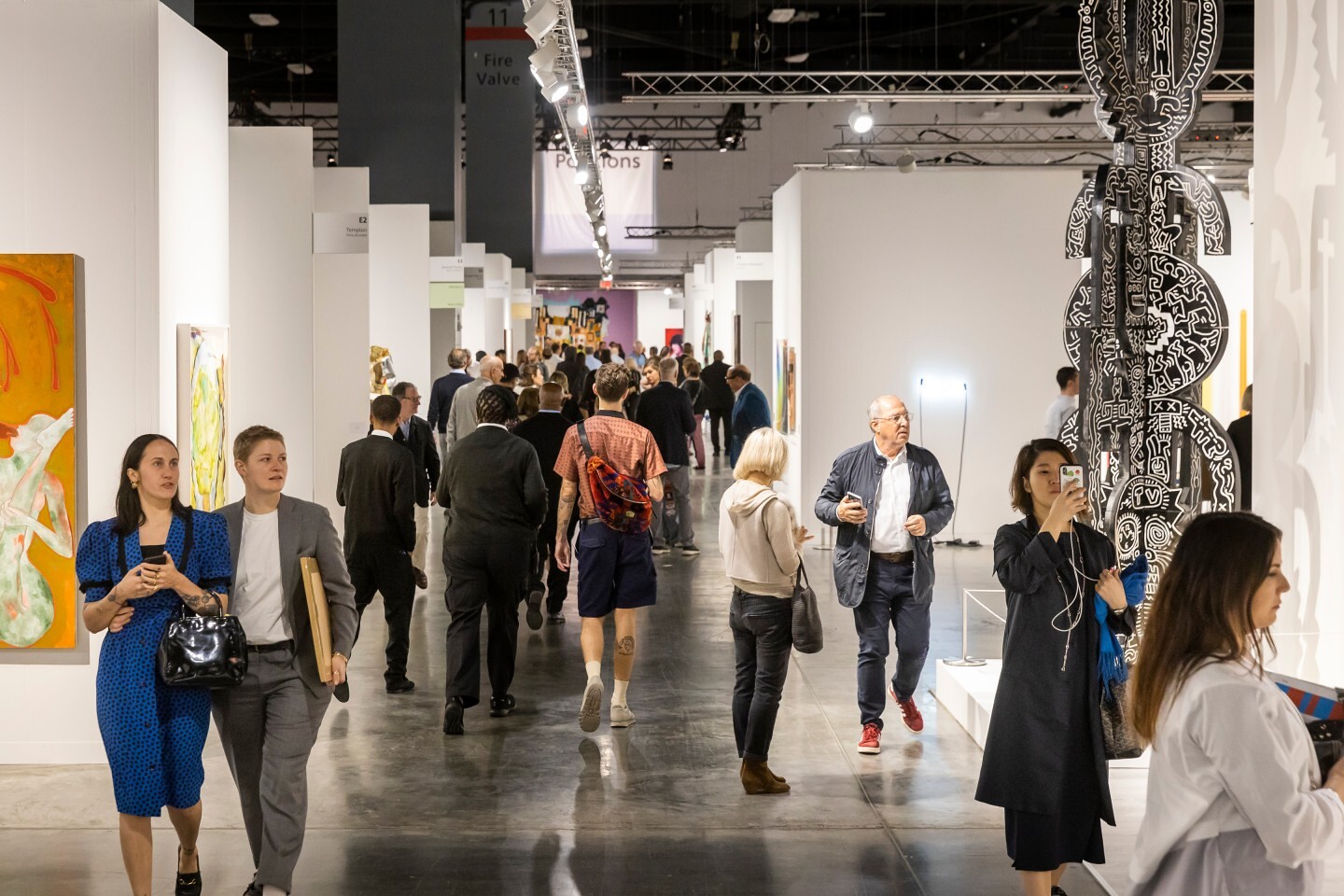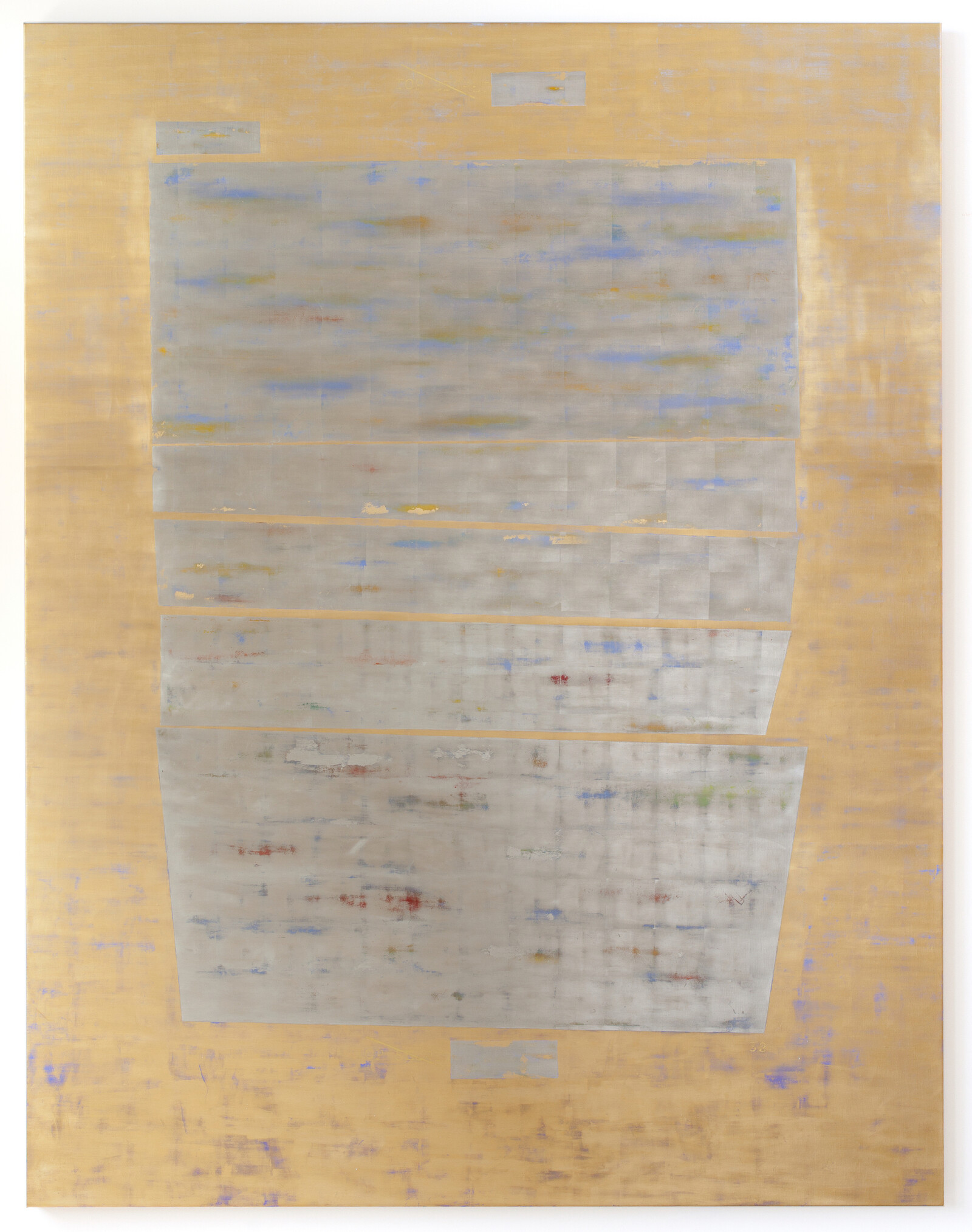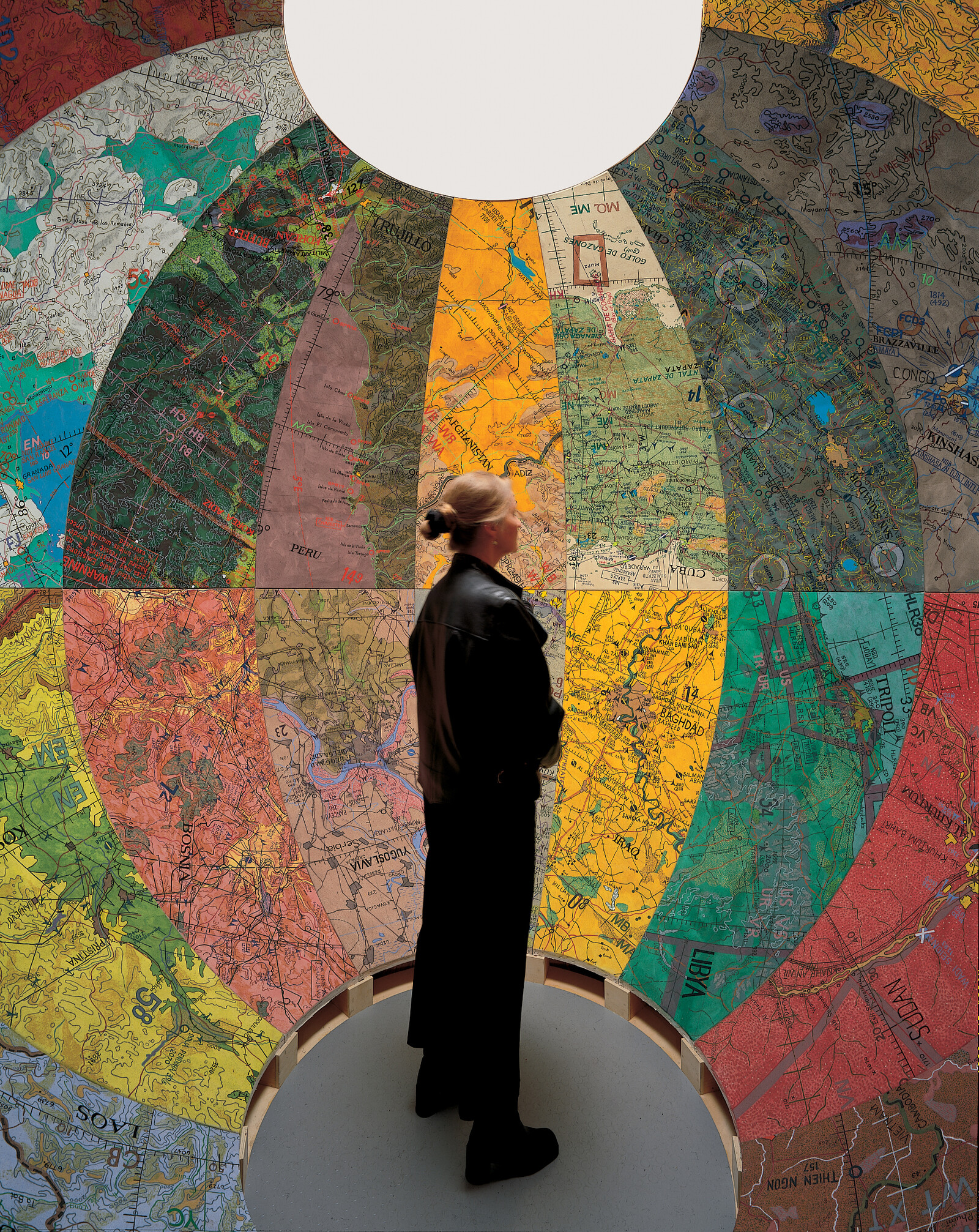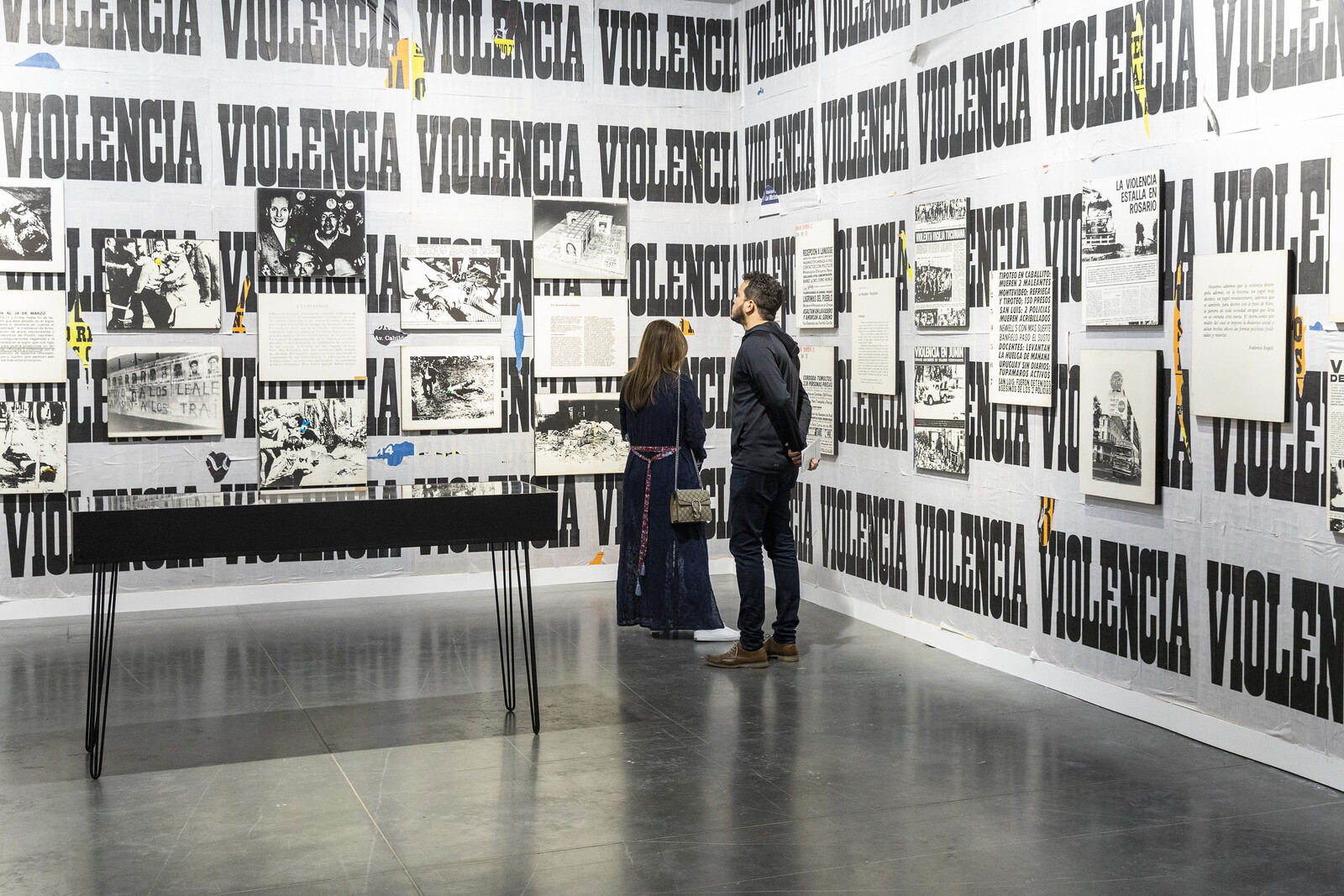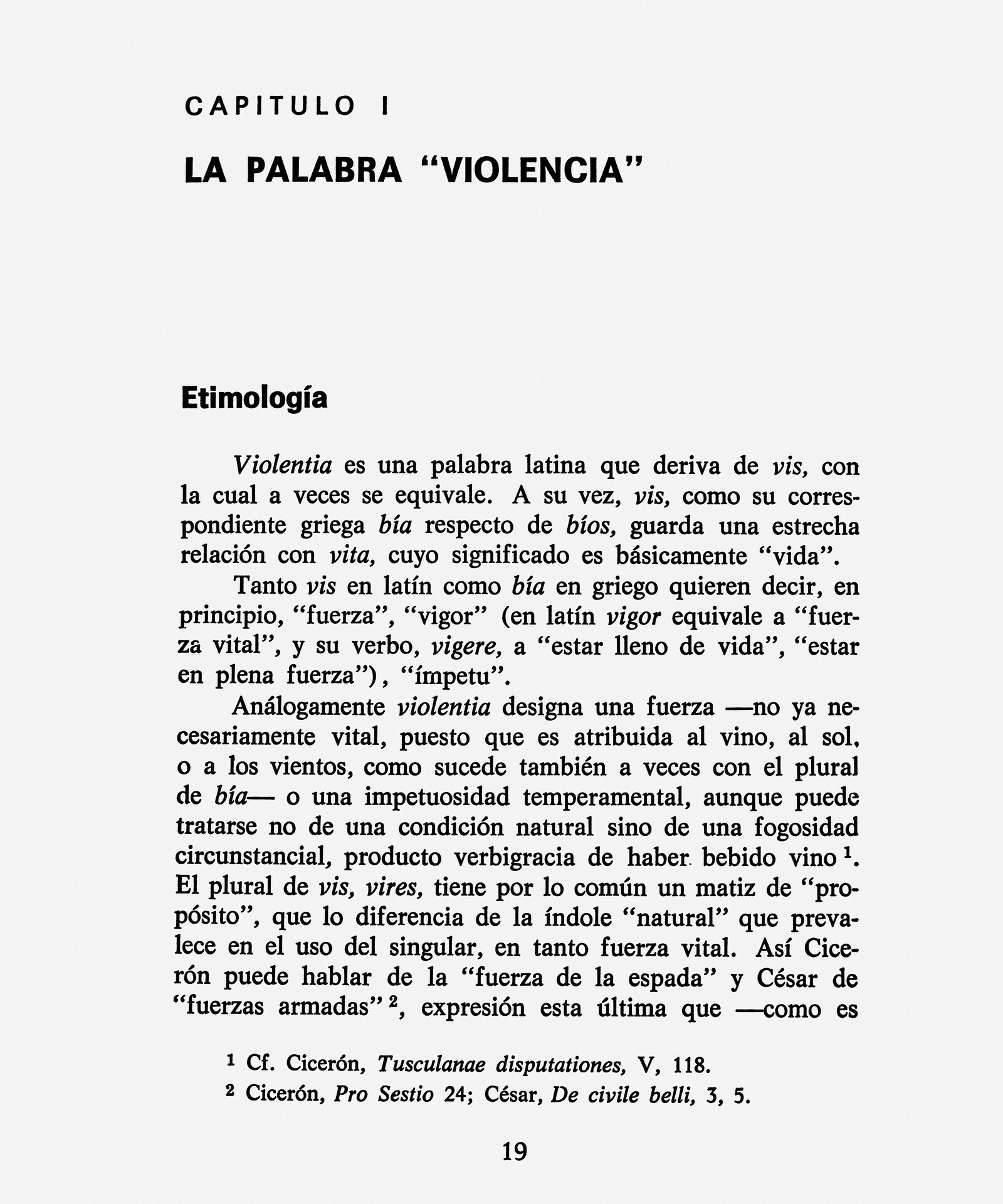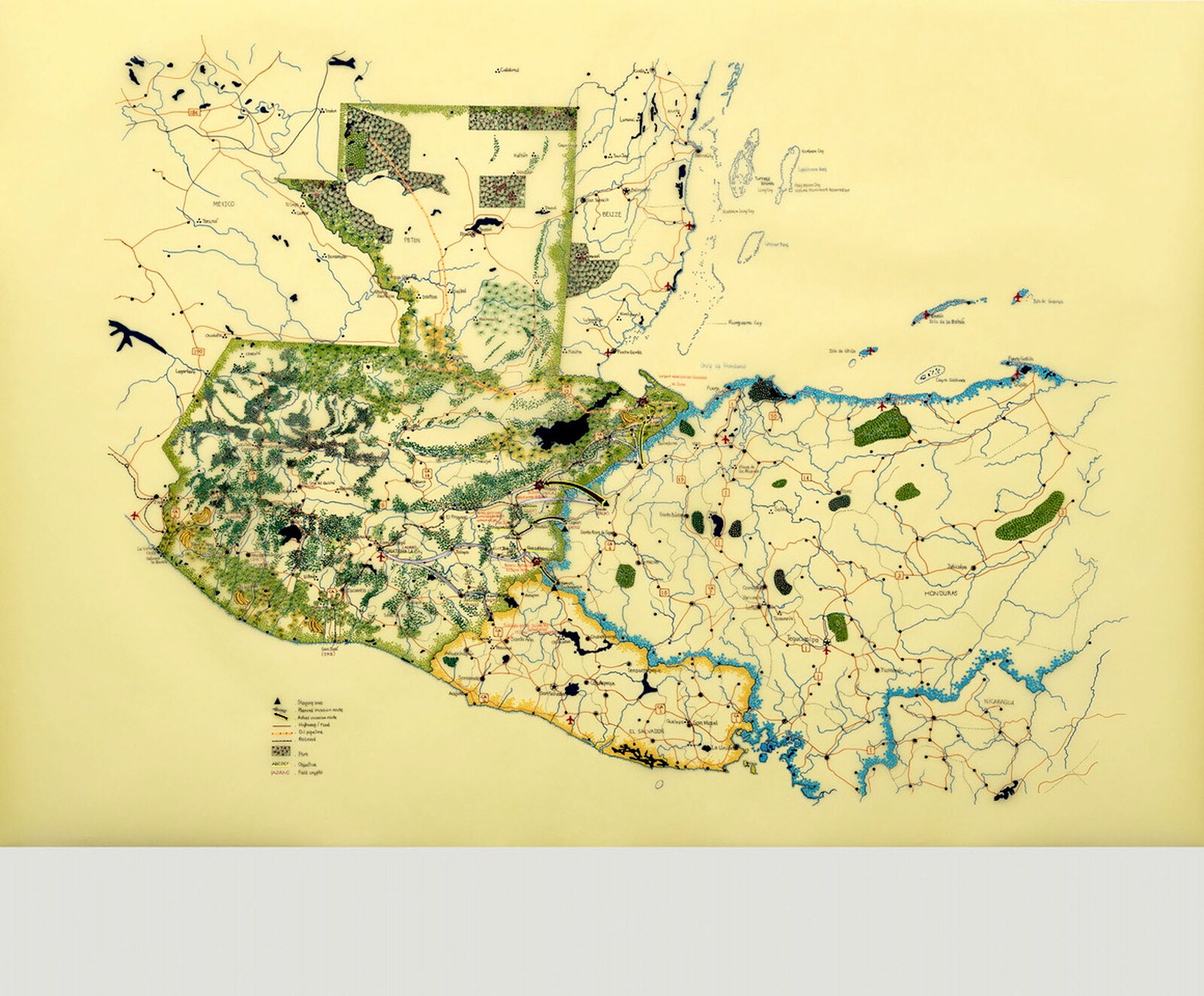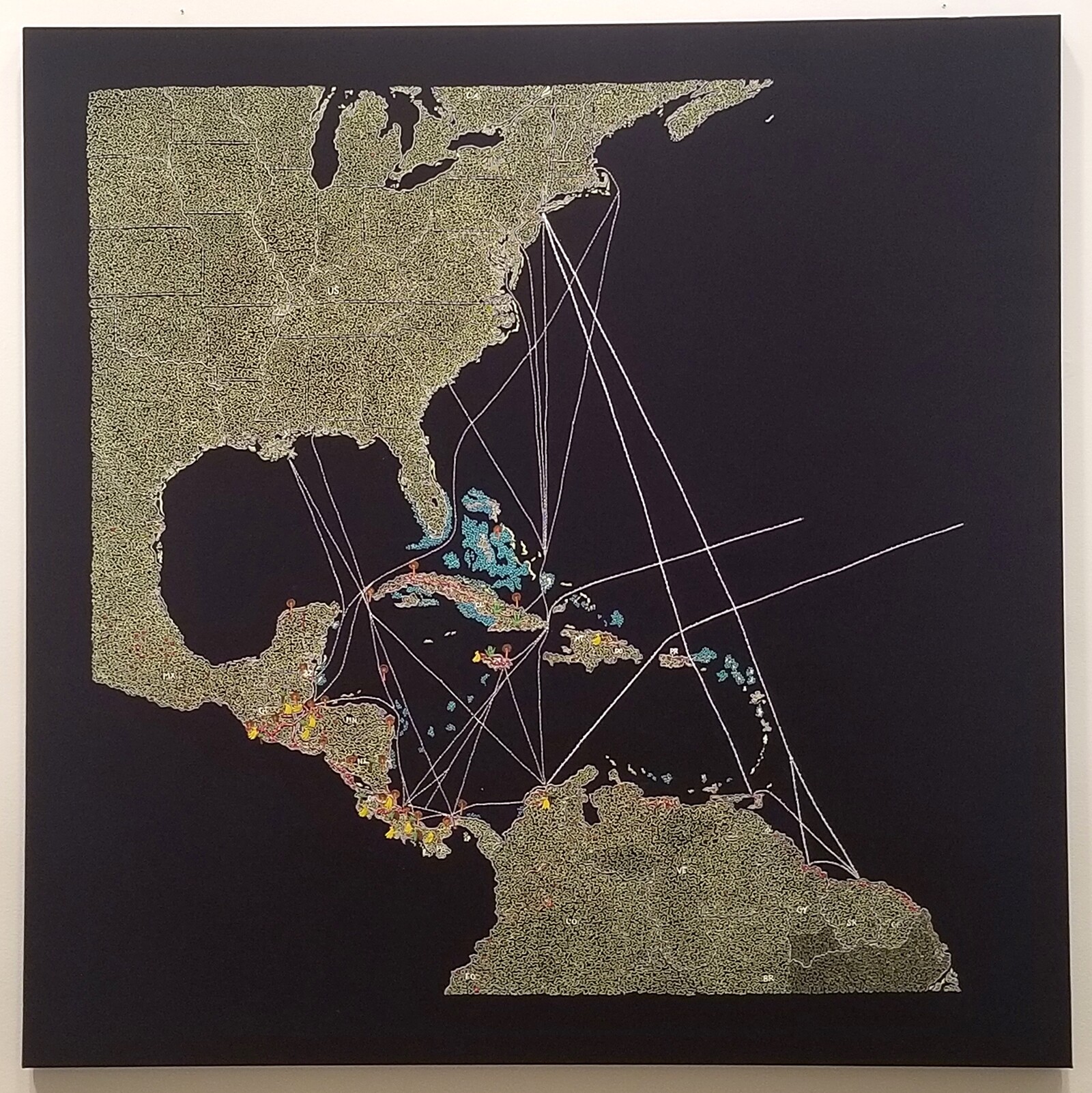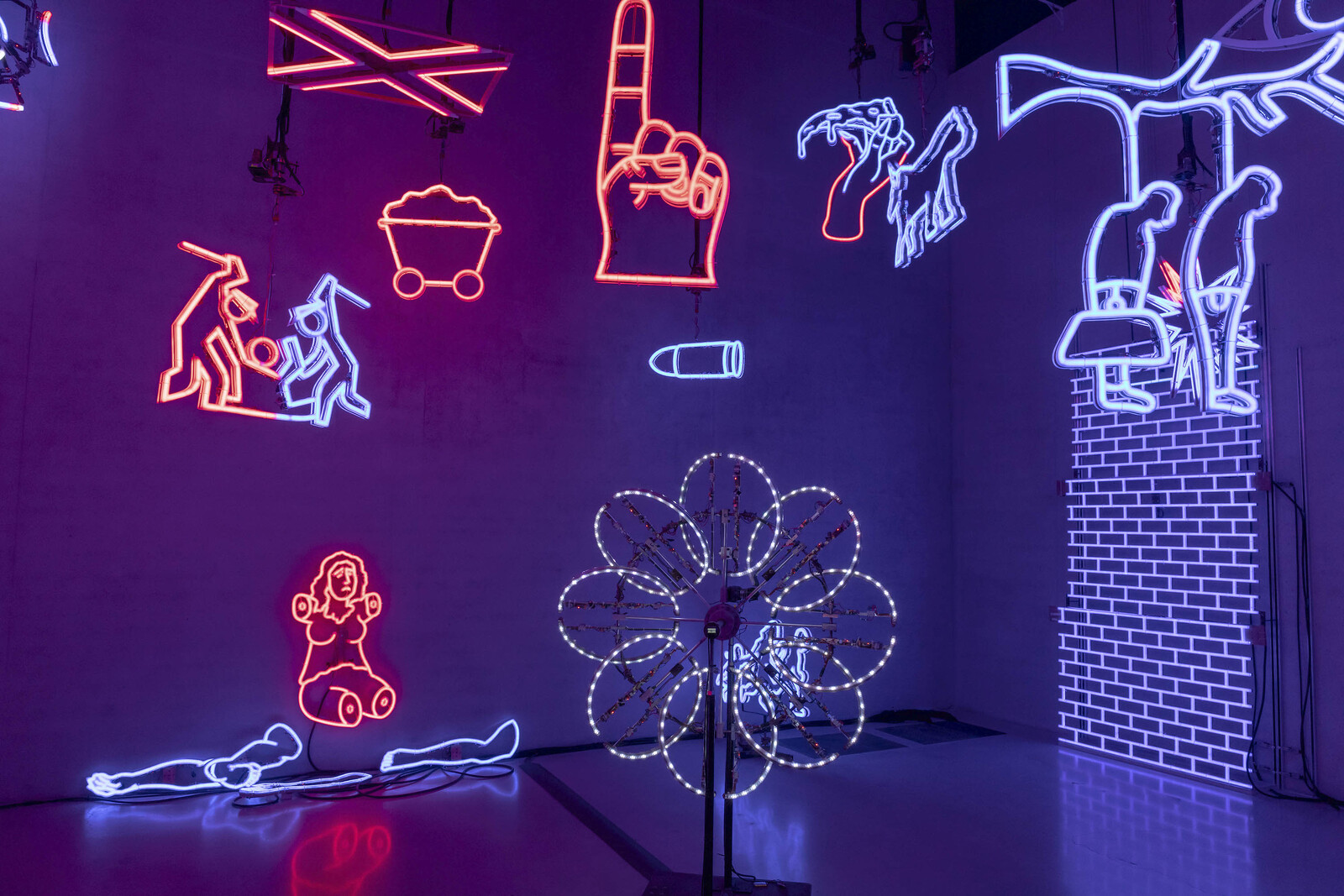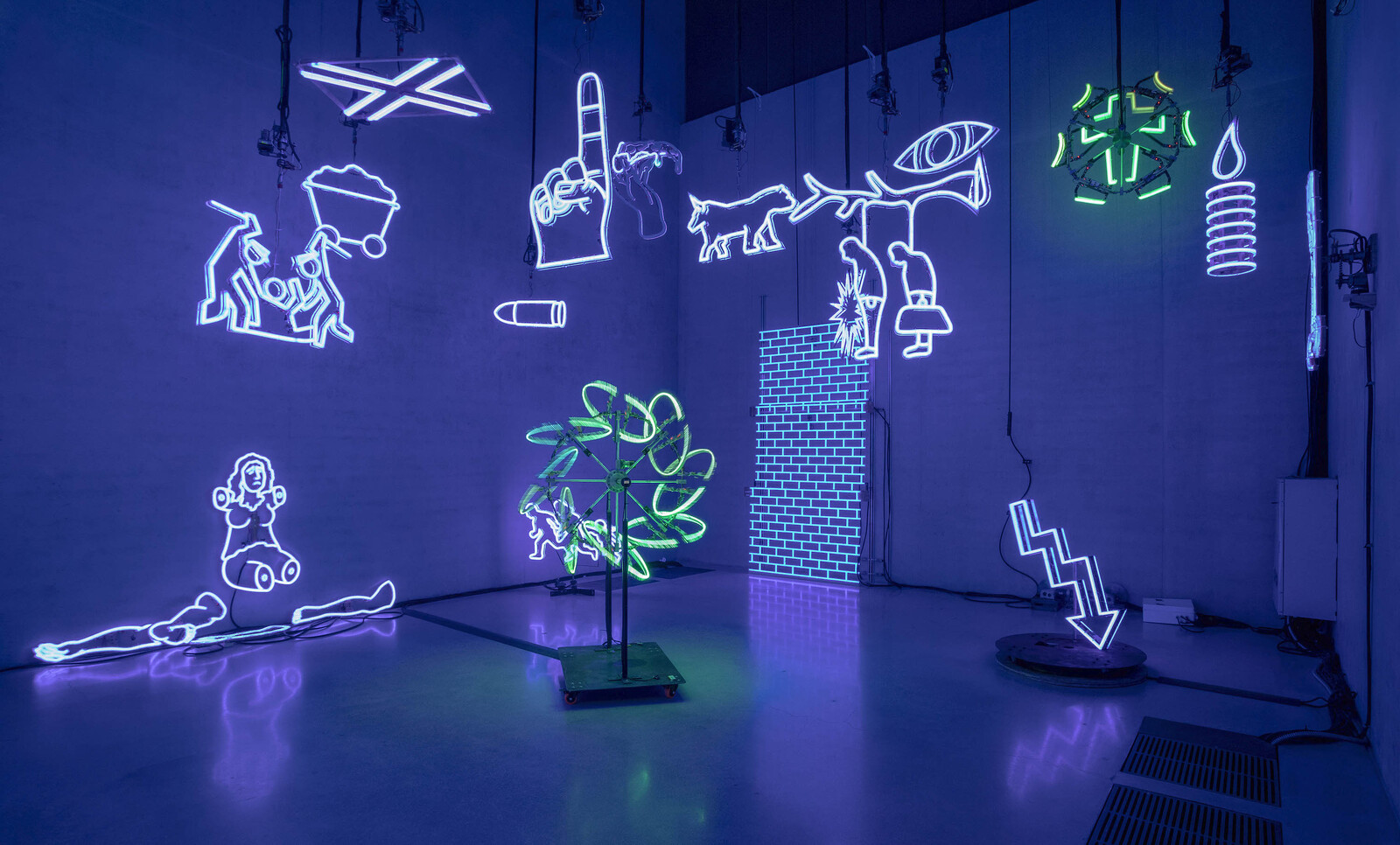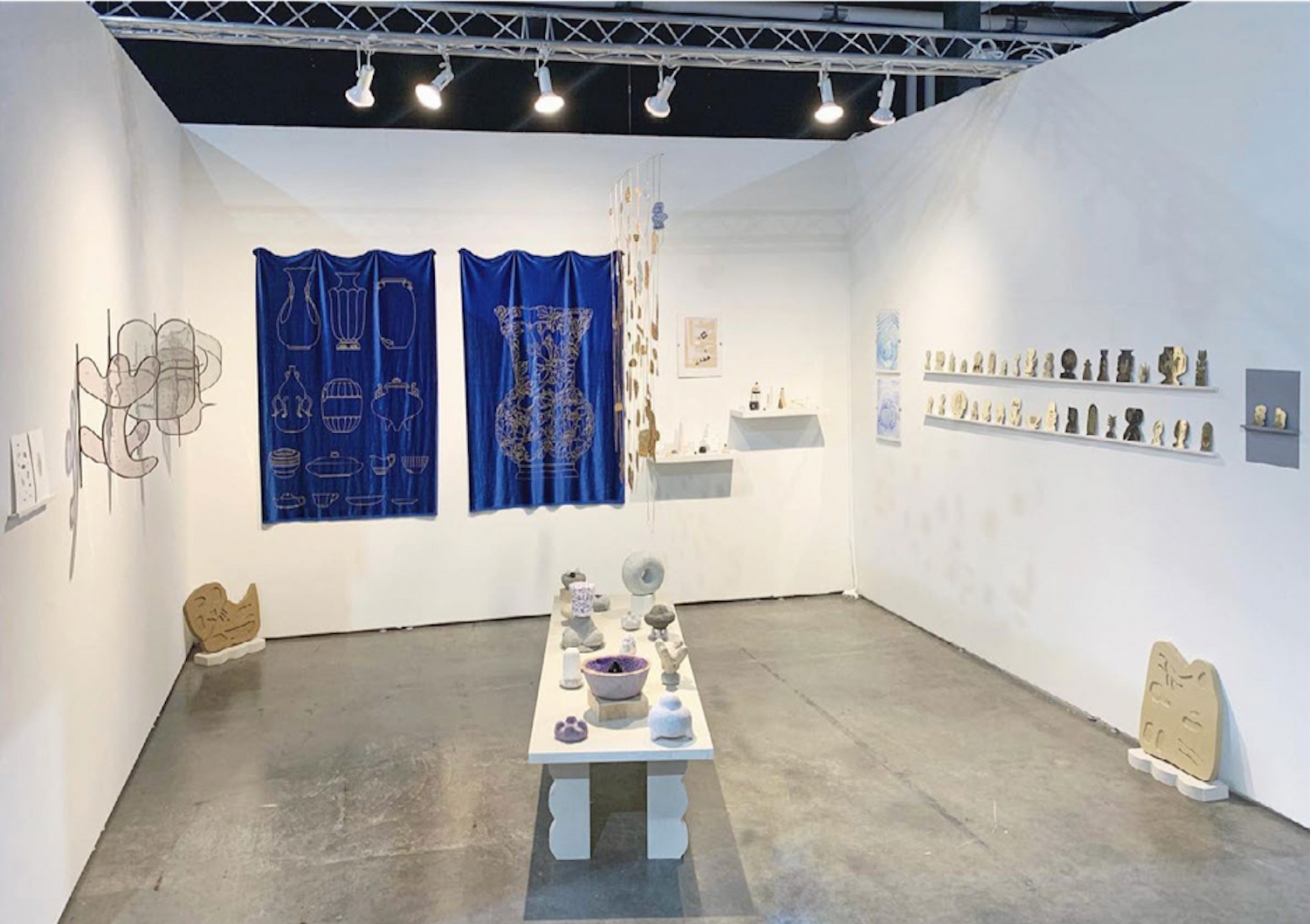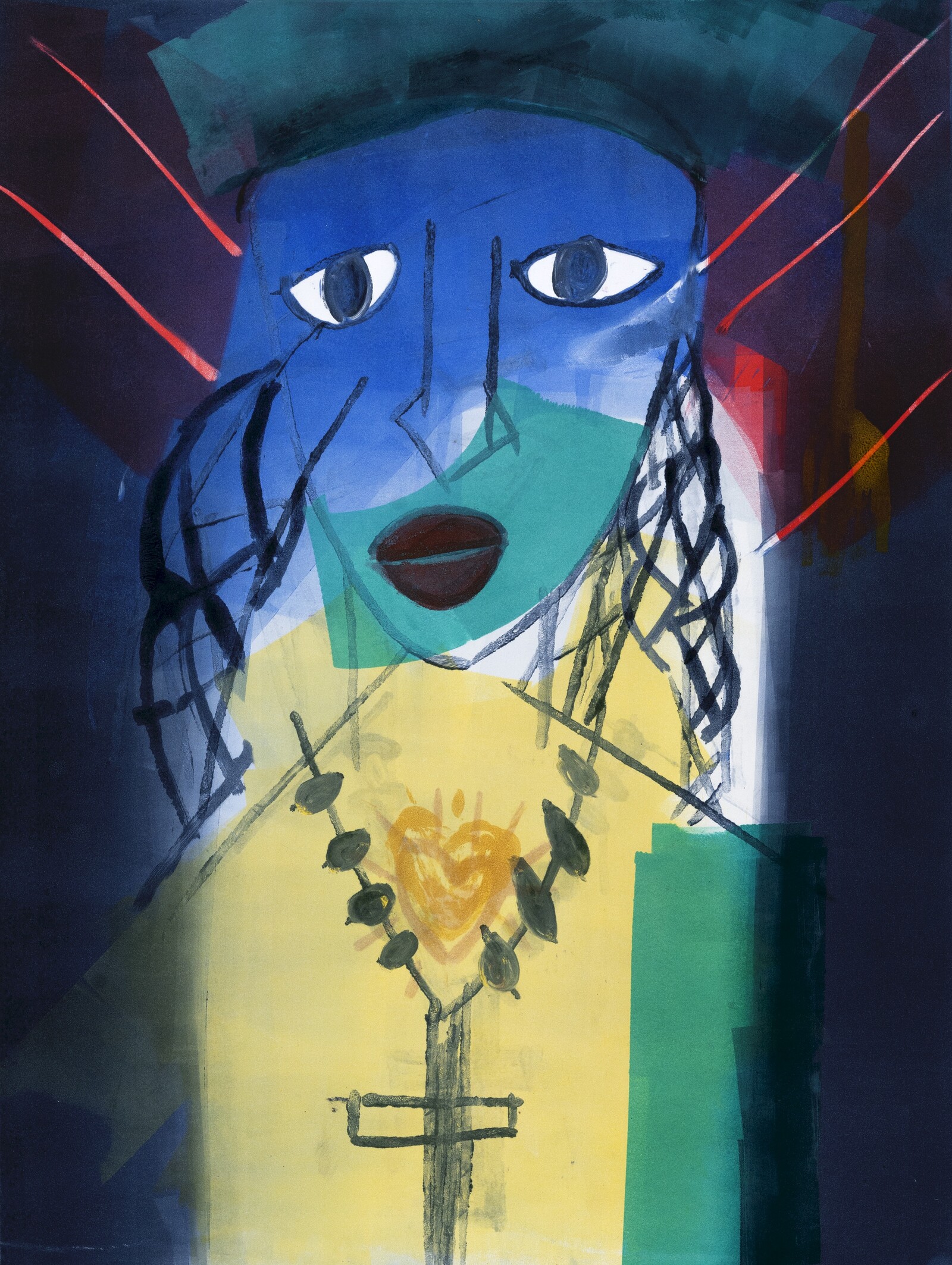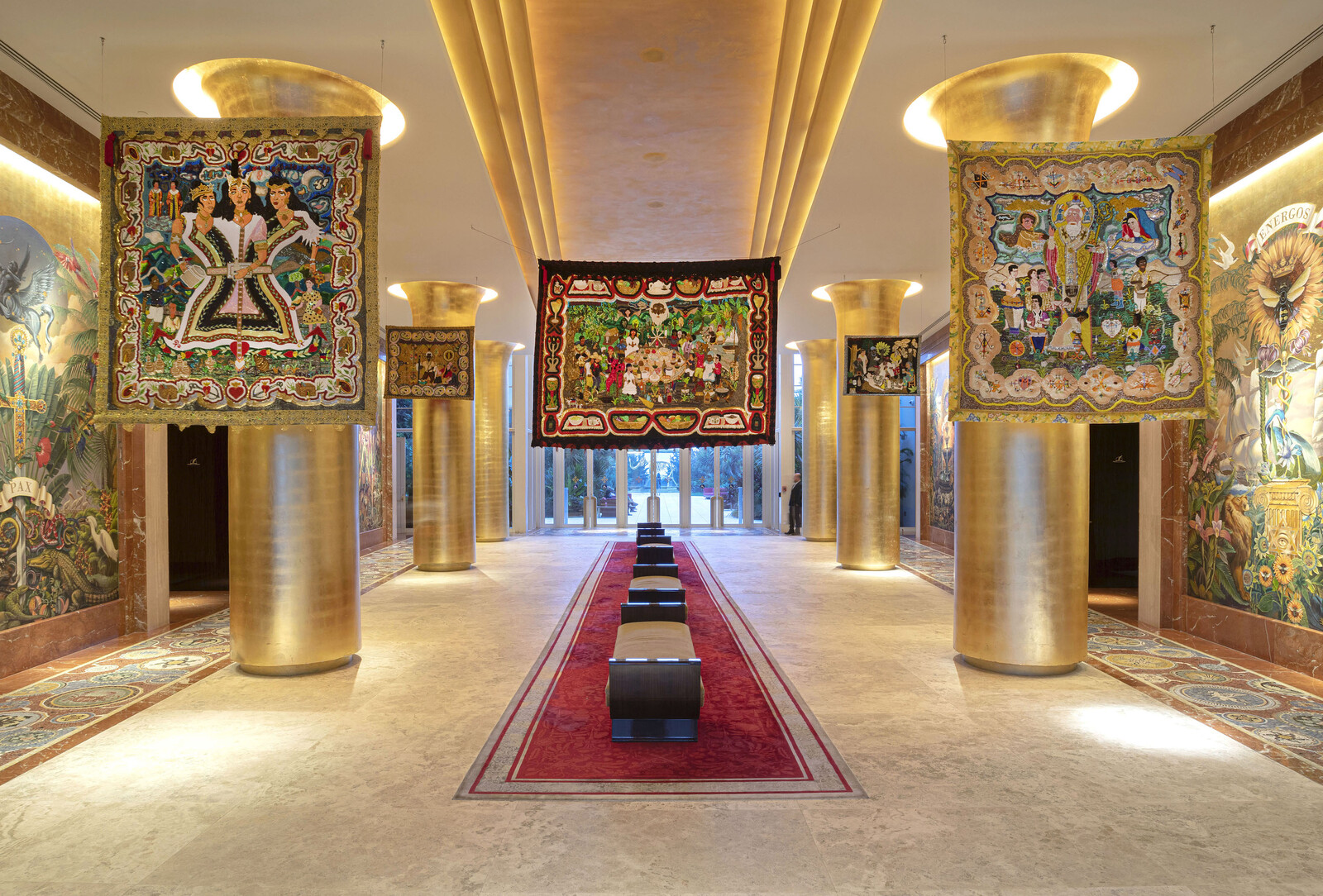In Camille Henrot’s video Saturday (2017), presented at the Faena Festival as part of Miami Art Week, the artist zeroes in on the Seventh-day Adventist Church in cryptic yet hypnotic fashion. Images of church services, baptism ceremonies, and a backstage look at a TV prayer telethon service titled “Let’s Pray!” are paired with images of surfers, medical procedures, and commercial-like footage of whole foods that are part of the church’s recommended diet regimen. Against all of this, chyrons send up a constant stream of bad news and cryptic messages such as “Justice: the door remained shut,” “Education: they’re just parroting what they hear back,” and “Crime: there are bruises where he still grabbed me.” It is an opaque but astonishingly beautiful meditation on keeping one’s faith in a hopeless world.
Not that far away, outside the convention center where Art Basel Miami Beach takes place, members of the Jehovah’s Witnesses would stand outside each day trying to engage passersby on their faith, peddling their beliefs as diligently as the gallerists selling art in their booths. Miami Art Week, which includes the main fair, two dozen satellite fairs, and a seemingly endless cavalcade of events is art at its most self-celebratory, ostentatious, and obscene. While Jehovah’s Witnesses adhere to their dogma for the promise of a resurrection after death, it is any wonder why believers in contemporary art continue to adhere to this yearly week-long ritual and not lose faith.
Every few years, Miami anoints a new pope. In past years, it has included Craig Robins, Alan Faena, and Norman and Irma Braman, each of whom built new temples to art and commerce (the Miami Design District, the Faena Arts District, and the Institute of Contemporary Art Miami, respectively). The new popes in town are the Rubells. Don and Mera, along with their son Jason, have been compared to the Medici family and what they decree as collectable is followed with fervent intensity. This year, they named artist Amoako Boafo their new patron saint; his figurative paintings, presented in the main fair in a solo booth by Chicago’s Mariane Ibrahim Gallery, sold out immediately. Sterling Ruby, who is among those who benefitted the most from early acquisitions by the family, is the subject of a retrospective at the ICA Miami about a 15-minute drive from the museum.
With the opening of their new space, the Rubell Museum, during Miami Art Week, the collectors are hoping to turn Allapattah into a new Vatican City. The area has historically been one of the most racially diverse in Miami, and also one of its lowest-income with the Miami New Times reporting that between 2013 and 2017, the median household income in the neighborhood was $22,000.1 That is likely to change. Just east of the neighborhood is Wynwood, the site of the Rubells’ former space, opened in 1993. Once a working-class neighborhood known as Little San Juan, it turned into an “arts district” and is now into a hyper-gentrified hellscape. While developers have been met with sustained opposition from the community, art patrons and institutions have escaped largely unscathed, despite developers drawing on cultural amenities to entice prospective clients. The late Tony Goldman, whose Goldman Properties was largely responsible for the redevelopment of Wynwood, established Wynwood Walls, a rotating mural gallery and a major tourist draw, in 2009. Robins, the developer of the Miami Design District, donated land for the ICA Miami; opened in 2017, the museum’s neighbors include Gucci, Prada, and Louis Vuitton. During the opening week of the Rubell Museum, Dior hosted a men’s fashion show across the street in a Rubell-owned warehouse and branded the fashion house’s logo on nearly every square inch of the building’s facade and interior. Each of these art venues has helped accelerate gentrification in the areas where they were built by attracting wealthier clientele, and thereby aided in the displacement of black and brown people in these areas. The erasure of culture that occurs when these communities are forced to relocate recalls how missionaries erase and replace indigenous practices in the name of religion.
At Art Basel Miami Beach, by contrast, the fair resembles a stockroom trading floor, both in atmosphere and in practice. Many works largely function as financial instruments. Amid those that intrigued me most were from the heretics and iconoclasts who spoke truth to power. Jenny Holzer, who has been simultaneously of the moment and ahead of the time her entire career, presents a particularly sneaky work at Berlin and London gallery Sprüth Magers. A continuation of her “Redaction Painting” series, which highlights classified documents from the United States government, Page 32 (2019) is made from 24 karat gold and palladium leaf and oil on linen, giving it an alluring luster. As with many of the works in this series, it appears to be a blocky abstraction in the style of Kazimir Malevich, yet it is an appropriation of the “OMS Guidelines on Medical and Psychological Support to Detainee Rendition, Interrogation, and Detention,” a heavily redacted document that focuses on the CIA’s “enhanced interrogation” techniques. Holzer understands that glittering facades often hold uncomfortable truths.
At New York’s DC Moore Gallery, Joyce Kozloff presents Targets (2000), a large wooden globe that viewers can enter and be surrounded by maps of US bombing sites dating from World War II to the start of the new millennium. This engulfing work forces viewers to confront a world where violence surrounds them. This theme recurred at Buenos Aires’s Waldengallery, which presented Violencia (1973), an incisive installation by the prominent Argentinian conceptual artist Juan Carlos Romero. With the word “VIOLENCIA” lining the walls of the booth, the installation features appropriations of gory images, news clippings, and theoretical texts on the subject of violence, and successfully argues that it can manifest in both visceral and discreet ways. At Tyler Rollins Fine Art, New York, Tiffany Chung presents a new series entitled “Guatemala Project.” Akin to data visualizations, the works were made on embroidered fabric alongside acrylic, ink, and oil on vellum and paper. Chung chronicles the activities of the United Fruit Company, which exerted its political influence in Guatemala and was accused of having participated in neocolonial practices. Preferring to chart historical rather than contemporary events, the artist lays evidence bare in an act of remembrance of atrocities.
Outside the fair, the mood is all spectacle, with flashy events to distract fairgoers from Miami’s most glaring problems. José Carlos Martinat captures this mood perfectly his exhibition “American Echo Chamber” at the Pérez Art Museum Miami. Curated by María Elena Ortíz, the exhibition space is filled with blazing neon signs depicting gruesome scenes, including the police brutalizing a man, a woman with severed limbs, migrants running, and other harrowing images. Viewers have been eager to take out their phones and document the brilliant lights they encounter, but only a few realize this horrifying vision of our current socio-political landscape that they are witnessing. While less evidence-based than Chung’s works, these feel no less truthful.
While it is difficult to keep one’s faith during this soul-crushing week, a few artists gave me hope. At the PINTA MIAMI art fair, held in in Wynwood, Quito’s No Lugar gallery showcased a vast array of small sculptures by Matias Armendaris, alongside a large mobile that references a broad spectrum of religious artifacts and relics from his native Ecuador and beyond. The artist appropriates symbols from ancient objects and introduces his own imagery into the work, creating a lexicon that connects the contemporary moment with past religious practices. At NADA, New York’s Gordon Robichaux hosted a solo booth of works by Leilah Babirye, a queer artist and activist exiled from Uganda to New York City after being outed and receiving death threats. She has created an enigmatic suite of portraits of imagined individuals, rendered in visceral, multimedia sculptures made in ceramic, wood, metal, and other materials, and bold, colorful works on paper inspired by the LGBTQ+ community that she left in her home country, thus creating new restorative narratives. Back at the Faena Festival, Haitian native Myrlande Constant presented a series of large Vodou flags—ornate, beaded, colorful figurative works that are used for ceremonial purposes. Her surrealist and mythological images are immaculately conceived and are as heavenly as divine apparitions. Utilizing their lived histories, looking back at their ancestors, and mining their heritages, these artists have found artistic rituals that can be as healing as prayer, and which fight erasure by writing their own canons.
Douglas Markowitz, “Will Allapattah Fall Victim to the Gentrification That Claimed Wynwood?” Miami New Times (December 3, 2019), https://www.miaminewtimes.com/arts/rubell-museum-opening-could-bring-changes-to-miamis-allapattah-neighborhood-11322834.
